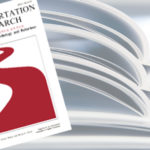
A paper titled “Safety culture among bus drivers in Norway and Greece” authored by Tor-Olav Nævestad, Ross O. Phillips, Alexandra Laiou, Torkel Bjørnskau, and George Yannis is now published in Transportation Research Part F: Traffic Psychology and Behaviour. The aims of this paper are to: (1) Examine the influence of national safety culture, sector safety focus and organizational safety culture on the safety behaviours of professional drivers, compared with other explanatory variables (e.g. age, type of transport, working conditions), and to (2) Examine the influence of safety behaviours and other factors (e.g. age, mileage, type of transport) on self-reported crash involvement. The study indicates a relationship between national road safety culture, road safety behaviour and crash involvement, that could be developed further to help explain differences in national road safety records. ![]()

The 5th Conference on Intelligent Transportation Systems and related developments in Greece, which is organised by the “Hellenic Association for the deployment of Intelligent Transport Systems – ITS Hellas, took place with great success on 17 & 18 December 2019 at the Hellenic Ministry of Infrastructure and Transport, Athens, Greece. The conference focused on the broad deployment of Intelligent Transport Systems (ITS) as a tool to achieve economic growth and prosperity and ensure the effectiveness, efficiency and safety of transport for the benefit of the respective industry, the end-users and the environment. During this important for the Hellenic transport sector event, prominent Greek and foreign speakers thoroughly discussed and presented a number of key-topics, through several sessions and a number of Round-Table discussions. ![]() NTUA actively contributed with the following presentation:
NTUA actively contributed with the following presentation: ![]() i-Dreams – Enhancing drivers safety by monitoring the behaviour through smartphones
i-Dreams – Enhancing drivers safety by monitoring the behaviour through smartphones
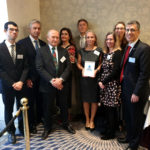
SaferAfrica Project has been awarded the prestigious Prince Michael International Road Safety Award 2019 as recognition for establishing a Dialogue Platform between Africa and Europe focusing on road safety management. SaferAfrica was an EU Horizons 2020 research project (2016-2019) relying on a rich and multilevel governance inspired by a common goal: make African roads safer. NTUA contributed actively by developing the African Road Safety Observatory as a core component of the Dialogue Platform. ![]()
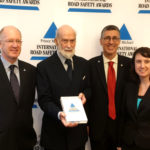
SafetyCube project has been awarded the prestigious Prince Michael International Road Safety Award 2019 as recognition for its innovative open-access web-based Road Safety Decision Support System (DSS) that enables policy-makers and stakeholders to select and implement the most appropriate strategies, measures and cost-effective approaches to reduce casualties of all road user types and all severities in Europe and worldwide. SafetyCube (Safety CaUsation, Benefits and Efficiency) was an EU Horizon 2020 research project (2015-2018). NTUA contributed actively at all phases of the SafetyCube project and was in charge of the development of the SafetyCube DSS. ![]()
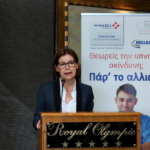
At a press conference organized by «Fondation VINCI AUTOROUTES» for Responsible Driving that took place with great success in Athens on 28 November 2019, the results of the “Euro-barometer for responsible driving” survey were presented, that took place in 12 European countries. It is the second year that Greece is included in the survey. The major risks for road safety in Greece according to the survey are drowsiness and inattention during driving. ![]()
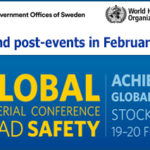
Several highly interesting pre-events were organised by various international road safety organisations, mainly the days before the 3rd Global High-Level Conference on Road Safety which took place on 19–20 February 2020, in Stockholm, Sweden, marking the conclusion of the UN Decade of Action for Road Safety. The full list of pre- and post-side events, including details regarding the scope, date and location of each one, is available in the following link: ![]()
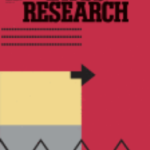
A paper titled “A meta-analysis of the impacts of operating in-vehicle information systems on road safety” authored by Apostolos Ziakopoulos, Akis Theofilatos, Eleonora Papadimitriou, and George Yannis is now published in IATSS Research. This study aims to estimate the overall impact of distraction due to operating in-vehicle information systems (IVIS) and similar devices while driving on road crashes. While similar research has been undertaken, varying results have been reported so far. The findings of this meta-analysis, suggest that device operation as a risk factor while driving is a less researched aspect of driver distraction than others, and more studies would improve result estimates and transferability, especially for professional drivers. ![]()
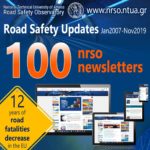
The November 2019 issue of NRSO Road Safety Update is the 100th newsletter of the NTUA Road Safety Observatory and we celebrate it with a dedicated infographic, proud having contributed to the very important road casualties reduction in Europe this period. With our first NRSO newsletter back on January 2007 and then more systematically with monthly newsletters since September 2011, we support systematically the international road safety community with key road safety knowledge and data, with ultimum objective safe traffic everywhere and for all. ![]()
![]()
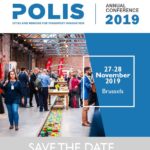
The 2019 Polis Conference tοοk place on 27 and 28 November 2019, in Brussels, Belgium, organised by POLIS, the European Cities Network, celebrating the network’s 30th anniversary. The conference provided an opportunity for cities, metropolitan areas and regions to showcase their transport achievements to a large audience, and for the wider transport community to engage with representatives of local and regional authorities on innovative transport solutions. Modern road safety problems and solutions in urban areas constituted a key focus area of the Conference. ![]()
![]() NTUA contributed actively with:
NTUA contributed actively with:
- a presentation

 The Effect of Mobility Characteristics on Road Safety in European Cities
The Effect of Mobility Characteristics on Road Safety in European Cities - contribution at the Closing Plenary Panel Session:
 Who’s the Action Hero in Vision Zero?: Mobility and Safety, New Road Safety Data
Who’s the Action Hero in Vision Zero?: Mobility and Safety, New Road Safety Data - signing the City Declaration: The new Paradigm for Safe City Streets
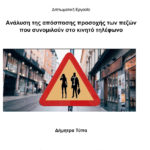
A Diploma Thesis titled “Analysis of pedestrians distracted behaviour talking on mobile phone” was recently presented by Dimitra Typa. The aim of this Diploma Thesis was to investigate the impact of hand-held cell phone conversation on pedestrians’ traffic and safety behaviour, when crossing signalized intersections. An outdoor-environment experiment, through video recording, was conducted in real road conditions, in three signalized intersections at the centre of Athens for the purpose of comparing the behaviour of distracted and non-distracted pedestrians. The results of the models’ application demonstrated that distraction caused by hand-held cell phone conversation had a negative impact on pedestrians’ main traffic and safety characteristics, since, in general, mobile use not only decreases pedestrians’ speed but also increases their probability of being involved in an accident with an oncoming vehicle. ![]()
![]()
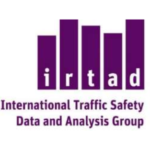
The International Traffic Safety Data and Analysis Group (IRTAD) of the International Transport Forum (ITF) organised a Meeting at DEKRA headquarters, in Klettwitz, Germany, on 23-24 October 2019, in which the latest international road safety developments were discussed. NTUA contributed actively with the following presentations:
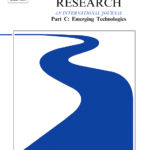
A paper titled “Driving Safety Efficiency Benchmarking Using Smartphone Data” authored by Dimitrios Tselentis, Eleni Vlahogianni, and George Yannis is now published in Transportation Research Part C: Emerging Technologies. This paper aims to provide a methodological framework for the comparative evaluation of driving safety efficiency based on Data Envelopment Analysis (DEA). The analysis considers each driver as a Decision-Making Unit (DMU) and aims to provide a relative safety efficiency measure to compare different drivers based on their driving performance. The proposed methodological framework is tested on data from fifty-six (56) drivers during a 7-months period. Findings help distinguish the most efficient drivers from those that are less efficient. Most common inefficient driving practices are identified (aggressive, risky driving, etc.) and driving behaviour is comparatively evaluated and analyzed. ![]()

The American Traffic Safety Services Association (ATSSA) and the American Association of State Highway and Transportation Officials (AASHTO) organized Safer Roads 2020 International Conference. The May 12-14 conference has been rescheduled for November 2020 and will be held in Richmond, Virginia, USA. The Safer Roads 2020 International Conference is a triennial event for roadway safety professionals and transportation officials from around the world. The conference brings together industry leaders, government officials, corporate roadway department personnel, and others in the roadway safety industry, with a focus on working better together. ![]()
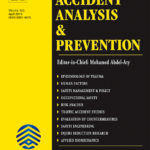
A paper titled “A review of spatial approaches in road safety” authored by Apostolos Ziakopoulos, and George Yannis is now published in Accident Analysis and Prevention. The aim of the present research is to critically review the existing literature on different spatial approaches through which researchers handle the dimension of space in its various aspects in their studies and analyses. Specifically, the use of different areal unit levels in spatial road safety studies is investigated, different modelling approaches are discussed, and the corresponding study design characteristics are summarized in respective tables including traffic, road environment and area parameters and spatial aggregation approaches. ![]()
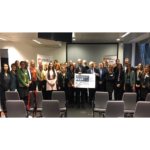
The European Federation of Road Victims (FEVR) along with the European Commission – DG MOVE and the WHO Regional Office for Europe commemorated the World Day of Remembrance for Road Traffic Victims on 18 November 2019, in Brussels, Belgium. From 1995, FEVR observed this day, as European Day of Remembrance, that was adopted by the United Nations in 2005, and is dedicated to remembering the many millions killed or injured in road crashes and their families and communities, as well as to pay tribute to the dedicated emergency crews, police and medical professionals who daily deal with the traumatic aftermath of road death and injury. The slogan of 2019 was: “LIFE IS NOT A CAR PART”. ![]()
![]()
![]()

The International Transport Forum (ITF/OECD) organised a Workshop on Micromobility Safety, as part of the ITF Corporate Partnership Board, which took place with great success in Lisbon, Portugal, on 18 October 2019. The workshop focussed on the safety questions arising with the rapid development of electrically powered personal mobility devices and framed policy recommendations (including safety regulation and road space allocation) to best manage the safety of all micromobility vehicles and services, from e-scooters to e-bikes, whether privately owned or hired. ![]() NTUA actively contributed with the following presentation:
NTUA actively contributed with the following presentation: ![]() The effect of experience on injury risk across various modes of transport
The effect of experience on injury risk across various modes of transport

The NTUA Department of Transportation Planning and Engineering contributed actively at the 9th International Congress on Transport Research (ICTR) themed: “Transportation 4.0: The Smart Evolution” and organised with great success on 24-25 October 2019, in Athens, Greece, by the Hellenic Institute of Transportation Engineers (HITE) and the Hellenic Institute of Transport (H.I.T.). Special focus was given to innovative research and technological developments and solutions for the improvement of traffic safety in Greece and worldwide. ![]() NTUA contributed actively with several traffic safety papers and presentations:
NTUA contributed actively with several traffic safety papers and presentations:
-
 Safe Road Design
Safe Road Design 
 Methodology for the economic assessment of road safety interventions
Methodology for the economic assessment of road safety interventions
 Tourism and Road Accidents in Greece
Tourism and Road Accidents in Greece
 Road Safety Culture Among Car Drivers and Motorcycle Riders in Greece: Examining Influencing Factors
Road Safety Culture Among Car Drivers and Motorcycle Riders in Greece: Examining Influencing Factors
 Impaired cycling and crash involvement in OECD countries
Impaired cycling and crash involvement in OECD countries
 Thematic Fact Sheets on Road Safety Risk Factors in Africa – A Knowledge and Management Tool
Thematic Fact Sheets on Road Safety Risk Factors in Africa – A Knowledge and Management Tool
 A Review of the Impact of Driver Distraction on Driving Behavior and Road Safety
A Review of the Impact of Driver Distraction on Driving Behavior and Road Safety
 Identification of Critical Driving Parameters Affecting Speeding Using Data from Smartphones
Identification of Critical Driving Parameters Affecting Speeding Using Data from Smartphones
 Greek driver attitudes towards aggressive driving
Greek driver attitudes towards aggressive driving
 Self-assessment and Road Behavior
Self-assessment and Road Behavior
 What is your driving identity? Some empirical findings using large-scale smartphone sensors’ data
What is your driving identity? Some empirical findings using large-scale smartphone sensors’ data
 Mapping Risky Driving Behavior in Urban Road Networks
Mapping Risky Driving Behavior in Urban Road Networks
 Techno-Economical Evaluation of Accidents’ Preventing Measures and Remedial Measures in Intersections on Existing Rural Two-Lane Highways
Techno-Economical Evaluation of Accidents’ Preventing Measures and Remedial Measures in Intersections on Existing Rural Two-Lane Highways
 Aspects of Safe Road Design for the Aging Road Users
Aspects of Safe Road Design for the Aging Road Users

The National Advanced Driving Simulator (NADS) of the University of Iowa organized the Road Safety & Simulation International Conference 2019 (RSS2019) which was held with great success on 14-17 October 2019 in Iowa City, Iowa, USA. The conference theme focused on Transformations in Transportation, and conference topics included, but were not limited to: Automated Vehicles Technology, Connected Vehicles Technology, Vulnerable Road Users, Roadway Infrastructure Design, and Distributed Simulation Technology. ![]()
![]() NTUA actively contributed with the following papers and presentations:
NTUA actively contributed with the following papers and presentations:

 A review of the interactions between Autonomous Vehicles and Vulnerable Road Users
A review of the interactions between Autonomous Vehicles and Vulnerable Road Users
 Can structural equation models assess overall driving performance in driving simulator experiments?
Can structural equation models assess overall driving performance in driving simulator experiments?
 Association of Expressed Driving Anger with Driving Performance Combining Simulator and Survey Data
Association of Expressed Driving Anger with Driving Performance Combining Simulator and Survey Data To which extent the driving behavior of older drivers with neurological diseases affecting cognition is different after an unexpected incident?
To which extent the driving behavior of older drivers with neurological diseases affecting cognition is different after an unexpected incident? Does driving at night affect the driving performance of young drivers? A driving simulator study
Does driving at night affect the driving performance of young drivers? A driving simulator study Interaction between autonomous vehicles and vulnerable road user
Interaction between autonomous vehicles and vulnerable road user Driving Simulator of the NTUA Road Safety Observatory
Driving Simulator of the NTUA Road Safety Observatory Driving anger: Emerging issues and opportunities to advance the safety science
Driving anger: Emerging issues and opportunities to advance the safety science
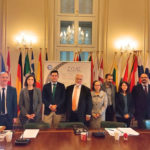

The European Transport Safety Council (ETSC) has published a Report titled “Briefing: EU Strategic Action Plan on Road Safety”. In June 2019, the European Commission adopted the EU Road Safety Policy Framework 2021-2030, outlining specific policy measures planned for 2021-2030 and developing on the EU Strategic Action Plan on Road Safety published in May 2018. ETSC stresses the need for stronger measures including legislation and a wider coverage of existing and emerging road safety issues that will be essential to addressing the recent stagnation in progress on reducing road deaths in the EU. ![]()
![]()
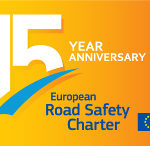
European Commissioner for transport Violeta Bulc announced the six winners of the European Road Safety Charter – Excellence in Road Safety Awards 2019 at a ceremony at the prestigious Vaudeville Theatre in Brussels on October 2019. Every year several initiatives of the European Road Safety Charter are rewarded for their contribution to safer roads across Europe. Violeta Bulc said: “Road safety is our common concern and priority. All of you are role models in your local communities, but also now acknowledged on the European scene. I wish to thank you wholeheartedly for your contribution to the improvement of the road safety culture in Europe. You are making a real difference in your community and you are inspiring others to do the same.” ![]()

Twelve EU Member States are joining forces to share smart ideas for improving road safety, as part of a new EU-funded project: “Road Safety Exchange”, coordinated by the European Transport Safety Council (ETSC) and launched in Brussels on October 9th, 2019. The three-year EU Road Safety Exchange project aims to tackle the current important disparities between the various EU countries and will link up experts on one hand from Bulgaria, Greece, Lithuania, Poland, Portugal, Romania, and on the other hand from Austria, France, Ireland, the Netherlands, Spain and Sweden. Transport experts from the twelve participating countries will work together to share best practice on reducing speed, building safe infrastructure and improve enforcement, data collection, as well as the safety of pedestrians and cyclists in urban areas. ![]()

The Final Conference of Interreg MED REMEDIO project took place with great success in Treviso, Italy, on 01-02 October, 2019. Two different events were organised to promote the dissemination of the project’s results, along with discussion about strategies to improve sustainable and safe mobility in MED cities. The first day was dedicated to the International Conference “Horizontal Condominium as a Living Lab for Urban Renewals” and on second day the Workshop/Capacity Building event “Paving the way to new ideas: the Horizontal Condominium of West Road” was held. ![]() NTUA actively contributed with the following presentation:
NTUA actively contributed with the following presentation: ![]() Sustainable Urban Mobility and Safety
Sustainable Urban Mobility and Safety
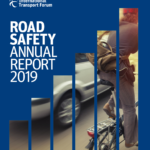
The International Road Traffic and Accident Database (IRTAD) of the International Transport Forum (ITF/OECD) published the full version of the Road Safety Annual Report 2019, which provides an overview of road safety performance for 41 countries. The report outlines the most recent road safety developments and provides comparative data for the main road safety indicators. It also offers detailed analysis by road user, age group and types of road. It describes the crash data collection process in IRTAD countries, the road safety strategies and targets in place and information on recent trends in speeding, drink-driving and other aspects of road user behaviour. ![]()
![]()

The Horizon 2020 research project LEVITATE organised an Experts and Stakeholders Workshop on Impact Assessment of Connected and Automated Transport Systems which took place with great success on 26 November, in Brussels. Public authorities, road users, researchers and industry players discussed how the Levitate Policy Support Tool (PST) could assist Cities identifying the potential societal level impacts of connected and automated transport systems. Emphasis was given to the prediction of the impact of transport systems automation (forecasting tool) and the identification of (policy) interventions to help achieve certain long-term mobility goals and/or to mitigate the potential negative effects of transport systems automation (backcasting tool). ![]() NTUA actively contributed with the following presentation:
NTUA actively contributed with the following presentation: ![]() Policy Support Tool
Policy Support Tool

On September 25, 2019, in Prague, Czech Republic, the RADAR project together with the General Automotoclub of the Czech Republic (UAMK) organised a Road Safety Expert Group (RSEG) Workshop on the safety provisions for vulnerable road users (pedestrians and cyclists). This Workshop focussed on optimised provisions for vulnerable road users (pedestrians and cyclists) and the assessment of the potential for dedicated infrastructure provisions and policy attitudes towards VRU safety in the Danube region. ![]() NTUA actively contributed with the following presentation:
NTUA actively contributed with the following presentation: ![]() RSEG Expert contribution to TA 2 Draft report – Key points for Greece
RSEG Expert contribution to TA 2 Draft report – Key points for Greece

ECTRI organized the first BE OPEN event, during the 47th European Transport Conference (ETC 2019) on October 11, 2019, in Dublin, Ireland. BE-OPEN is a 30-months Horizon 2020 Coordination and Support Action that started on 01 January 2019 aiming to promote Open Science in transport research and assist in regulating and standardizing it. Open science on road safety is a key issue examined within the BeOpen project and the related implementation of TOPOS, the Transport Observatory / fOrum for Promoting Open Science. ![]() NTUA actively contributed with the following presentation:
NTUA actively contributed with the following presentation: ![]() Analysis of the State of the Art, Barriers, Needs and Opportunities for Setting up a Transport Research Cloud study’s findings
Analysis of the State of the Art, Barriers, Needs and Opportunities for Setting up a Transport Research Cloud study’s findings

A paper titled “A systematic cost-benefit analysis of 29 road safety measures” authored by Stijn Daniels, Heike Martensen, Annelies Schoeters, Wouter Van den Berghe, Eleonora Papadimitriou, Apostolos Ziakopoulos, Susanne Kaiser, Eva Aigner-Breuss, Aggelos Soteropoulos, Wim Wijnen, Wendy Weijermars, Laurent Carnis, Rune Elvik, Oscar Martin Perez is now published in Accident Analysis and Prevention. For the purposes of this study the authors collected and (re-)analyzed evidence in order to conduct cost-benefit analyses (CBAs) for 29 road safety measures. The information on crash costs was based on data from a survey in European countries. A systematic procedure was applied including corrections for inflation and Purchasing Power Parity in order to express all the monetary information in the same units (EUR, 2015). Cost-benefit analyses were carried out for measures with favourable estimated effects on road safety and for which relevant information on costs could be found. Results were assessed in terms of benefit-to-cost ratios and net present value and are included also at the SafetyCube DSS. ![]()
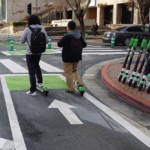
NACTO’s Guidelines for Regulating Shared Micromobility outline best practices for cities and public entities regulating and managing shared micromobility services on their streets. Its recommendations were developed to reflect the wide variety of experiences that North American cities have had in regulating and managing shared micromobility. Shared micromobility is still in its infancy and there are outstanding questions and option for which there is not yet a defined best practice, as highlighted within these Guidelines. ![]()
![]()

The 20th International Walk21 Conference on Walking and Liveable Communities took place in Rotterdam, on 7-10 October 2019, under the theme: “Smart, Healthy and For everyone”. The future city needs to be able to adapt to transitions with smart urban design and new mobility solutions. Measuring walking and walkability and integrating walking into traffic/transport management tools (e.g. modelling) and decision making, can assure a smart city will always be designed on a human level. At the conference were highlighted examples of evidence, tools, measures and systems that have delivered more walking or better walkability. ![]() The presentations per day of Walk21Rotterdam are available in the following link.
The presentations per day of Walk21Rotterdam are available in the following link. ![]()














































































































































































